- News
- Reviews
- Bikes
- Accessories
- Accessories - misc
- Computer mounts
- Bags
- Bar ends
- Bike bags & cases
- Bottle cages
- Bottles
- Cameras
- Car racks
- Child seats
- Computers
- Glasses
- GPS units
- Helmets
- Lights - front
- Lights - rear
- Lights - sets
- Locks
- Mirrors
- Mudguards
- Racks
- Pumps & CO2 inflators
- Puncture kits
- Reflectives
- Smart watches
- Stands and racks
- Trailers
- Clothing
- Components
- Bar tape & grips
- Bottom brackets
- Brake & gear cables
- Brake & STI levers
- Brake pads & spares
- Brakes
- Cassettes & freewheels
- Chains
- Chainsets & chainrings
- Derailleurs - front
- Derailleurs - rear
- Forks
- Gear levers & shifters
- Groupsets
- Handlebars & extensions
- Headsets
- Hubs
- Inner tubes
- Pedals
- Quick releases & skewers
- Saddles
- Seatposts
- Stems
- Wheels
- Tyres
- Health, fitness and nutrition
- Tools and workshop
- Miscellaneous
- Cross country mountain bikes
- Tubeless valves
- Buyers Guides
- Features
- Forum
- Recommends
- Podcast
review
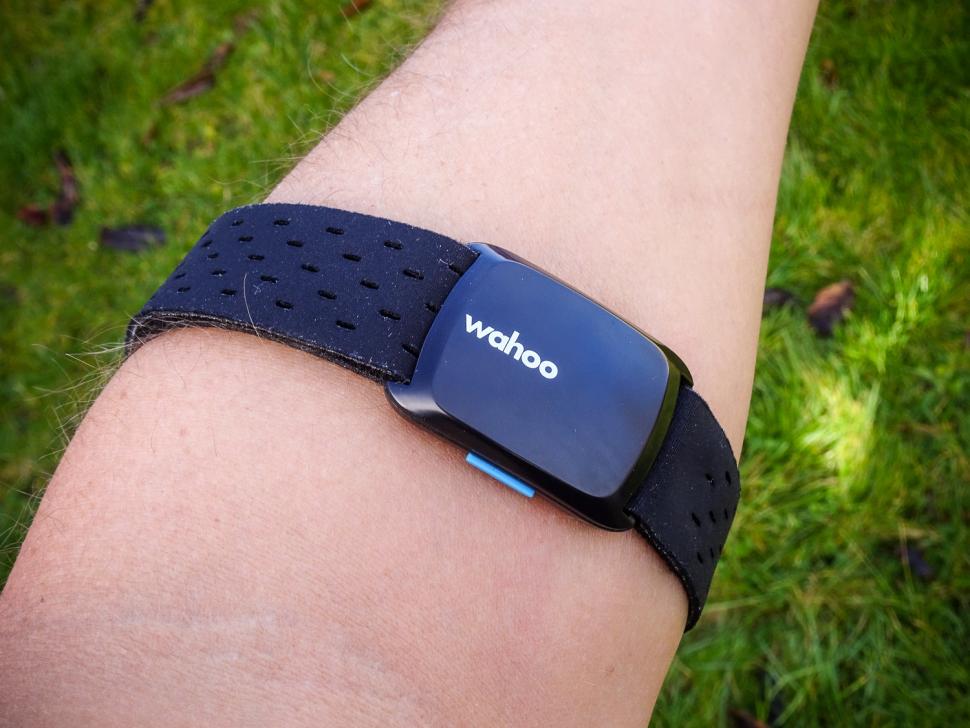 Wahoo TICKR FIT heart rate monitor
Wahoo TICKR FIT heart rate monitor£64.99
VERDICT:
Good heart rate monitor option for indoor training, or if you don't get on with a chest strap
Weight:
45g
Contact:
At road.cc every product is thoroughly tested for as long as it takes to get a proper insight into how well it works. Our reviewers are experienced cyclists that we trust to be objective. While we strive to ensure that opinions expressed are backed up by facts, reviews are by their nature an informed opinion, not a definitive verdict. We don't intentionally try to break anything (except locks) but we do try to look for weak points in any design. The overall score is not just an average of the other scores: it reflects both a product's function and value – with value determined by how a product compares with items of similar spec, quality, and price.
What the road.cc scores meanGood scores are more common than bad, because fortunately good products are more common than bad.
- Exceptional
- Excellent
- Very Good
- Good
- Quite good
- Average
- Not so good
- Poor
- Bad
- Appalling
The TICKR FIT is a new heart rate monitor from Wahoo, which uses an optical sensor and goes on your arm. Your arm! I know, right? Anyway, it's accurate and comfortable, and it might be just the thing for indoor training, or if you don't like chest-mounted heart rate monitors for whatever reason; our non-scientific polling suggests that there's a fairly small but not insignificant minority of people in that camp.
- Pros: Accurate, convenient, comfortable to wear, easy pairing with ANT+ and Bluetooth
- Cons: Potential jacket sleeve+wrist strap issue, tan lines...
The TICKR FIT is rechargeable, and comes with its own charging cable which attaches magnetically to the sensor. Having a proprietary charger means you'll need to remember where the lead is, and you can't charge at work if the lead is at home in your drawer of useful things, but you shouldn't need to charge it that often: Wahoo claims a battery life of 30 hours, which should see you through most rides you'd reasonably need a heart rate monitor for. If you're doing a two-day sleep-in-a-hedge audax, your heart rate is probably the least of your worries. In testing I found the battery life to be very good, although not quite up to the 30-hour claim.
> Find your nearest dealer here
The TICKR FIT broadcasts on both ANT+ and Bluetooth, and it's a piece of cake to pair: press the button to turn it on, the LED flashes blue and you're away. Hold the button down until the LED flashes red, and you've turned it off. Simple enough, though if you're used to a chest HRM that fires up and powers down automatically, it might take a couple of sessions to remember to turn it off at the end if you're anything like me. I found the connection to be stable on both protocols, with no dropouts either in or out of doors.
Optically speaking
The TICKR FIT uses an optical sensor. Where a chest-strap HRM is basically a pared-down ECG machine, detecting the electrical signal of your heart beat, an optical sensor shines light into your skin and uses an algorithm to work out how often the blood is pulsing through your veins. When optical HRM sensors first emerged they were a bit, well, guessy. Nowadays the tech has moved on. Both are very accurate.
Electrical sensor HRMs rely on a good connection between the electrodes and the skin, so you have to make sure they're moist: not an issue when you're sweaty, but it can be when you're starting a workout, especially if you have more hair on your chest than you do on your head, not that I'd know.
The opposite is true for optical sensors: they work fine when you're not sweaty, but getting sweat on the sensor (especially if it's a loose fit and not in direct contact with the skin) can make for issues, as the sweat can diffract the light. However, I've been using the TICKR FIT both in and out of doors and I haven't had any particular issues with sweat affecting the reading; the arm band holds it nice and snug, which no doubt helps. Wahoo says you can wear it on the inside or outside of your arm; I prefer the outside. Two different sized straps are included, and both are adjustable for fit.
Armed and accurate
Wahoo's stated reason for producing an arm-mounted HRM is two-fold. Firstly, it says that it's the best in terms of accuracy, and secondly, that some athletes find a chest-mounted HRM uncomfortable. In the interests of not-really-science we asked the good people of Facebook and Twitter whether they found chest straps comfortable, and most of them seemed to be happy enough. However, there's certainly a minority out there (about 17% of our audience) for whom they don't work: some people just don't like them, and if you're a female athlete wearing a sports bra then the two often come into conflict.
And is it more accurate? Well, I've worn a lot of HRM straps over the years and I've never had cause to doubt their accuracy when they're working properly. A chest HRM is detecting the electrical signals from your heart, so assuming it's doing that correctly there shouldn't be much margin for error. I've found the TICKR to be accurate too. It's not inferior to a chest strap in that regard. But neither is it an improvement. They both work fine.
Forewarned
So, the TICKR FIT is on your forearm, and if you're hopping on the indoor trainer for a session, or heading outside for a run, or nipping off to the pool for a swim, then it's an easy thing to slip on and off. In my experience it stays put pretty well and is comfortable to wear. (Wahoo's youTube video shows it in action here.)
If you're off to Mallorca for a week of training in the sun you might be a bit loath to give yourself an even more idiosyncratic tan than you'd normally get. And if you're competing in a triathlon that involves a wetsuit, or you're riding in changeable conditions where you're pulling a jacket on and off, you're going to lose it in your sleeve sooner or later.
It's marginally less of a faff than putting on a chest band (which is rendered much more of a faff by the fact that you always forget until you've got all your kit on) but I can't see it taking over as the default position for competition, especially cycling. It's more prone to getting in the way, and you look a little bit more silly than you otherwise would.
> Buyer's Guide: 11 of the best heart rate monitors
In the end it's horses for courses here. I find the TICKR FIT pretty much perfect for indoor training: you can put it on in about two seconds, it works fine from the off without any faffing with position or licking of electrodes. If I was predominantly a swimmer or a runner I might also see the appeal of the design there. Where it doesn't work as well as a chest-mounted HRM is when you're out and about on the bike, taking your jacket on and off for the showers or working on your tan lines in the sun.
If you're riding outside, and want to measure your heart rate, and you really don't get on with chest straps for whatever reason, then at least here you have a different option that will no doubt be more comfortable.
It's a hard thing to score: there will be people out there who are thinking, 'At last! This is just what I needed!' I'm a bit more ambivalent, but overall it's a welcome option, and very easy to use.
Verdict
Good heart rate monitor option for indoor training, or if you don't get on with a chest strap
road.cc test report
Make and model: Wahoo TICKR FIT
Size tested: One size
Tell us what the product is for
Wahoo says, "TICKR FIT heart rate armband uses optical heart rate technology to provide accurate heart rate and calorie burn data in the most comfortable form factor yet! Equipped with Bluetooth and ANT+ technology to seamlessly pair with fitness apps, smartphones, and GPS bike computers and watches. Worn on the forearm, the TICKR FIT heart rate monitor comes with an adjustable band that is designed for your most grueling workouts including running, cycling, fitness classes, and more. TICKR FIT has water-resistant technology and a rechargeable battery that lasts up to 30 hours."
Tell us some more about the technical aspects of the product?
From Wahoo:
DUAL BAND TECHNOLOGY
Both Bluetooth and ANT+ capabilities allow for a wireless connection to both smartphones and GPS bike computers and watches. Note: Does not serve as an ANT+ bridge.
REAL TIME HEART RATE AND CALORIE TRACKING
See workout data while you exercise, including vital metrics such as heart rate and calorie burn when connected to a smartphone or ANT+ device
ADVANCED PERFORMANCE MATERIAL
Made from advanced performance materials, TICKR FIT is designed to comfortably fit around your arm, yet fit securely during intense activity.
USB RECHARGEABLE BATTERY
Includes a USB rechargeable battery with up to 30 hours of battery life.
LED INDICATOR LIGHTS
Visual confirmation that the TICKR FIT is powered, connected, and transmitting via Bluetooth and / or ANT+
TWO ADJUSTABLE BANDS INCLUDED
TICKR FIT comes with 2 adjustable bands (small and large size) in the box
THIRD PARTY APP COMPATIBILITY
Works seamlessly with most third party apps including Strava, TrainerRoad, Nike+ Running, Runkeeper, and MapMyFitness
APPLE WATCH AND APPLE TV INTEGRATION
There are two options for integration: One, connect directly to your Apple Watch as another option for gathering heart rate data in the Apple Workout app. Two, connect via the 7 Minute Workout app, Wahoo RunFit app or Beachbody on Demand app for tracking heart rate on the watch as you workout.
Rate the product for quality of construction:
9/10
Rate the product for performance:
8/10
Rate the product for durability:
8/10
Rate the product for weight (if applicable)
9/10
Rate the product for comfort (if applicable)
8/10
Rate the product for value:
6/10
Tell us how the product performed overall when used for its designed purpose
Pretty well: it measures your heart rate accurately and it's comfortable.
Tell us what you particularly liked about the product
Comfy, easy to wear, easy to pair.
Tell us what you particularly disliked about the product
Expensive, not so good for outdoor riding.
Did you enjoy using the product? Yes, for some things.
Would you consider buying the product? Yes, for indoor training/running.
Would you recommend the product to a friend? Yes, if it fitted their needs.
Use this box to explain your overall score
Hard to score: it might be the perfect thing for you. Overall it's a good addition to the market, and will work well for some people, less so for others.
About the tester
Age: 44
I usually ride: whatever I'm testing... My best bike is: Kinesis Tripster ATR, Kinesis Aithein
I've been riding for: Over 20 years I ride: Every day I would class myself as: Experienced
I regularly do the following types of riding: road racing, time trialling, cyclo-cross, commuting, club rides, sportives, general fitness riding, fixed/singlespeed, mountain biking, Mountain Bike Bog Snorkelling, track
Dave is a founding father of road.cc, having previously worked on Cycling Plus and What Mountain Bike magazines back in the day. He also writes about e-bikes for our sister publication ebiketips. He's won three mountain bike bog snorkelling World Championships, and races at the back of the third cats.
Latest Comments
- the little onion 3 sec ago
Because I like to keep people updated. I had a very helpful chat with CyclingUK today. Can't say too much, but I still firmly believe that they,...
- quiff 1 min 3 sec ago
Agree. I might have some sympathy with using the bus lane rather than the crossing (though you're right, they shouldn't be using it). Signage could...
- ROOTminus1 1 hour 47 min ago
Front page of the local rag, earlier in the week. How careless of the driver to let their car do that.
- chrisonabike 1 hour 46 min ago
Hmm... sounds like the usual "over-reaction due to previous under-reaction". (Think Waverley station here has also banned these?)...
- David9694 2 hours 2 min ago
"Just a flesh wound" was expecting to be the. 94th person to post...
- Global Nomad 2 hours 15 min ago
Is the end a regular circle? I.e would establishing the size of any circular object on a new chainring give you the same info on a worn one? Seems so.
- Paul J 2 hours 26 min ago
I have the CatEye mounted on the seat stay. The CatEye angled mount means the light ends up pointing in right direction.
- Johnny Rags 3 hours 20 min ago
I'm on our local council and am always more than happy to argue in favour of pedestrianisation (which we're looking into) or charging for car...
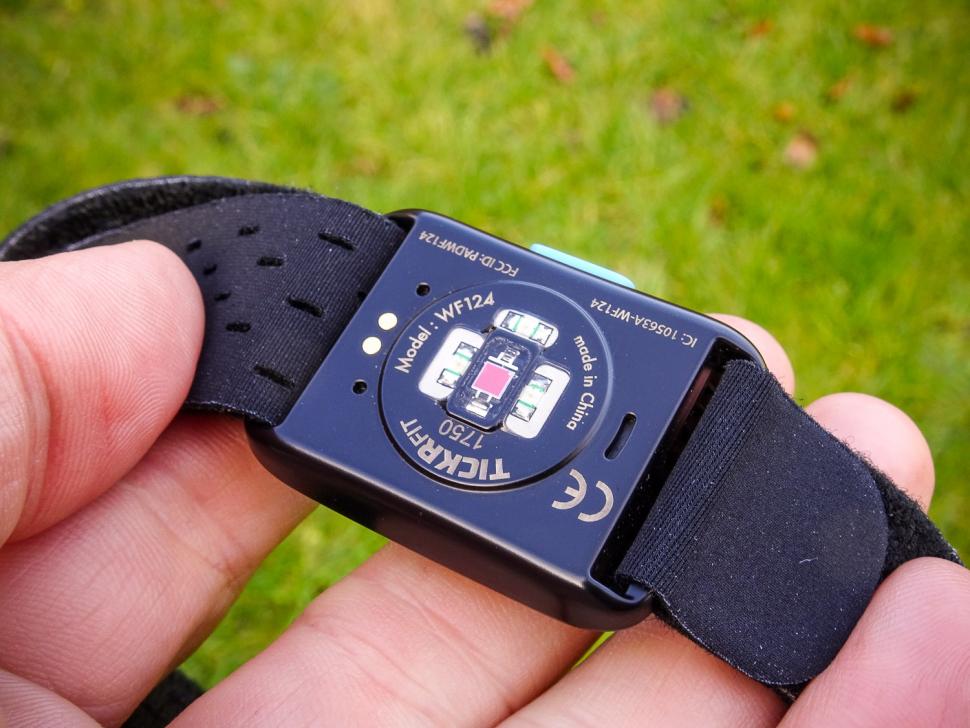


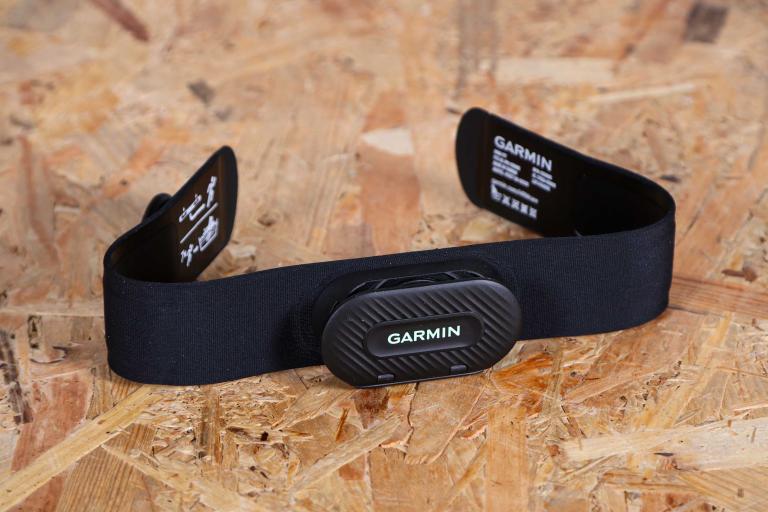

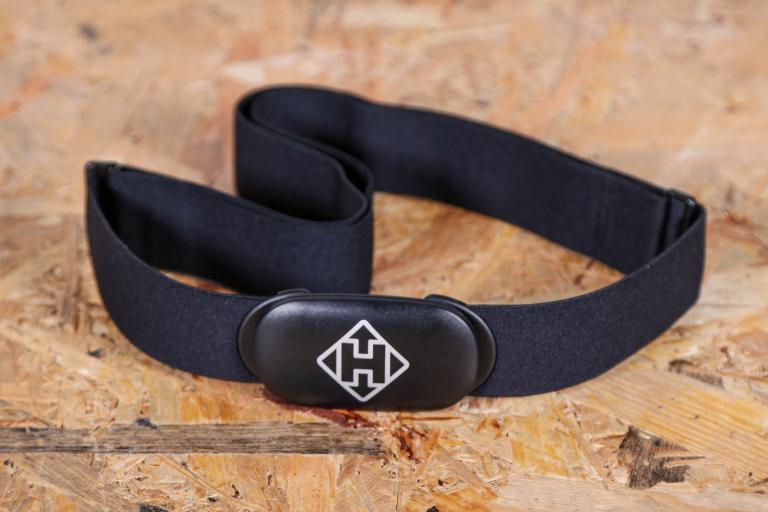
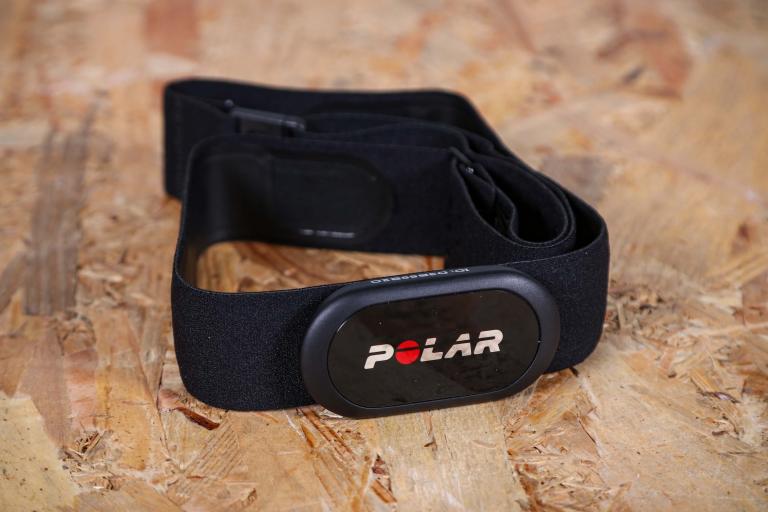
Add new comment
13 comments
The latest optical HR readers seem almost as good as chest straps, having lived with a Garmin HR watch for the past couple of months I find it comfortable and pretty accurate for running/ cycling. Needs to be on reasonably tight and set it to broadcast mode, lock screen, done.
For me this Wahoo falls down slightly on two points:
Inconvenience of an arm strap with getting base layers/ jerseys over it as opposed to wrist or chest and price - this is nearly twice the price of what you pay for chest straps
Yeah my Fenix 5's optical HR is accurate... The new generation is a real improvement.
Having worn it alongside my chest strap while cycling and running, it's a bit 'laggy' but only a few seconds, from what I've seen. Well within tolerable accuracy for me.
I've tried several optical HRs including all those mentioned here, and in my experience the Scosche RHYTHM+ is the best. In my case it works well on the upper arm just under a short sleeve, so no tan mark issues. The DCR reviews are a worthwhile read if you're thinking of Mio Link, Scosche RHYTHM+, or Wahoo Tickr Fit.
https://www.dcrainmaker.com/2018/01/wahoo-tickr-fit-optical-hr-sensor-in...
Intersting, there's been a couple of times in winter when I've not sweated enough for my chest strap to record. Its a bit costly though for those couple of times
If you wet the contacts before you put it on, should pick up a reading then?
Thank's, I do that and for 95% of rides its fine, its just a couple of times (like last weekends group rides) it fails and flatlines or doesn't read Fortunately most times its only a background metric and I don't look at HR on a ride ride.
Fortunately most times its only a background metric and I don't look at HR on a ride ride. 
Don't you just lick your HRM contact patches before putting your chest strap on? Surely I can't be the only one who does this? Grosses my children out, mind.
"you look a little bit more silly than you otherwise would" - which, lets face it, is pretty silly to start with.
Also, if the optical version doesn't work so well when wet, how does taking it in pool work? And I sweat complete buckets on trainer so not sure optical is for me.
Seems like a solution in search of a problem although if you do have a problem with chest straps then I imagine you are thrilled.
like i said, i've not had a problem with this one, i think it's more an issue with something like a watch where it's not necessarily worn tight against the skin
HR belt spit
I've had a Mio link optical HR wristband for years and my wife has the Scosche RHYTHM+.
Both seem to do lots of software smoothing of the HR to avoid misreads.
This means they are pretty well useless for doing intervals or short efforts.
How does this device perfrom with a rapidly rising HR?
It's good: indistinguishable from a chest strap in my experience. the pic is 3x 10-second sprints at 900W. HR rises from 150 up to 173 after first effort (continues rising until the middle of the rest), drops and rises twice more to a max of 176. Pretty much exactly what I'd expect to see
Screen Shot 2018-02-06 at 15.00.03.png
ignore
I suppose I don't hate the idea of not getting 'man boobs' every time I put a HR on... but on the other hand, as I'd not want to juggle between two HR monitors, having a white band on my forearm would be a brand new 'first world problem'.
This is probably more a 'fitness tracker' kinda sell rather than a 'cycling sell' product, great for my better half at spin class.